Swiss meringue buttercream is the cure for all of our frosting heartache. It is consistently smooth, glossy and stable to make our cakes and cupcakes shine.
(Love experimenting with different kinds of frosting? Try Russian buttercream or condensed milk buttercream which I used as base in this Yema Cake. It’s delicious!)

When I first learned how to bake, I struggled with buttercream and cream cheese frosting (who am I kidding – me and cream cheese frosting are still not friends).
I couldn’t always get the consistency I wanted – smooth and creamy so I can properly frost with it but also stiff enough so it doesn’t fall off the cake or cupcake.
Then I discovered Swiss meringue buttercream and I haven’t looked back. It’s luxuriously smooth, so glossy, super stable and pipes like a dream.
What is Swiss meringue buttercream
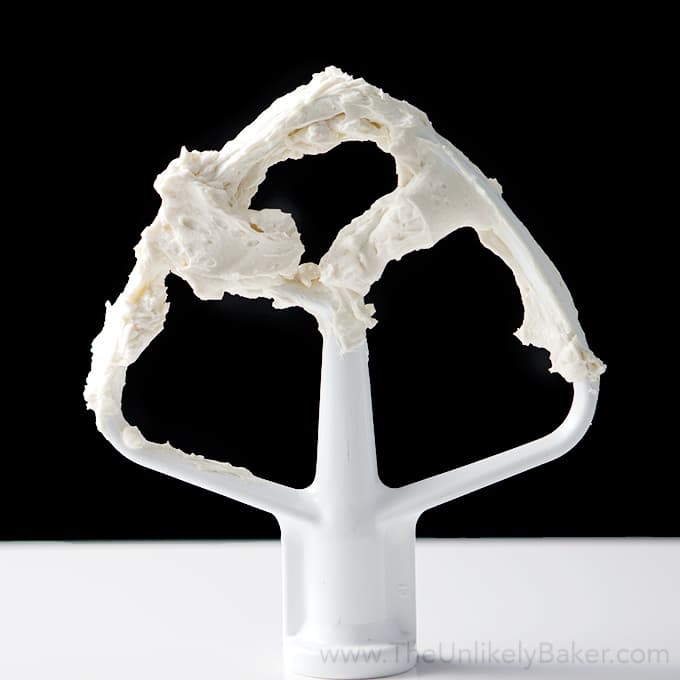
Swiss meringue buttercream (SMBC) is smoother and creamier than the more popular American buttercream, and is less sweet.
Unlike American buttercream which is made of butter, confectioner’s sugar and a little bit of milk or cream, Swiss buttercream starts with egg whites and sugar (meringue), to which butter and other flavours are added.
I’ve heard about but mostly ignored Swiss meringue buttercream because it involved a slightly more complicated process. Then I saw this video by Thomas Joseph. He made it look sooo easy.
But it was this excellent, step-by-step tutorial by Sweetapolita that finally convinced me to try. And my oh my, where have you been all my life Swiss meringue buttercream?
FAQs and troubleshooting guide
While making Swiss buttercream is more involved (you’ll need a stove and a double boiler), the method is easy enough that someone like me can do it (therefore, so can you!).
Plus, here are tips and answers to your frequently asked SMBC questions to make your buttercream-making a breeze.
My Swiss meringue buttercream feels grainy
The first step to making SMBC is mixing egg whites and sugar in a bowl over simmering water. This not only cooks the egg whites, it also dissolves the sugar.
If your buttercream feels grainy, you might not have heated the mixture enough to dissolve the sugar.
A great way to tell if you’ve done this step right is by carefully dipping your finger into the sugar mixture — if you don’t feel any grains of sugar anymore when you rub a small amount of mixture between your fingers, you’re good.
How to make SMBC without a thermometer
I always use a candy thermometer when making SMBC but you can totally make it without one, using the tip I mentioned above.
Carefully dip your finger into the sugar mixture, rub the mixture between your fingers, and if it feels warm but not hot and you don’t feel grains of sugar anymore, you’re good to go.
What to do when SMBC curdles
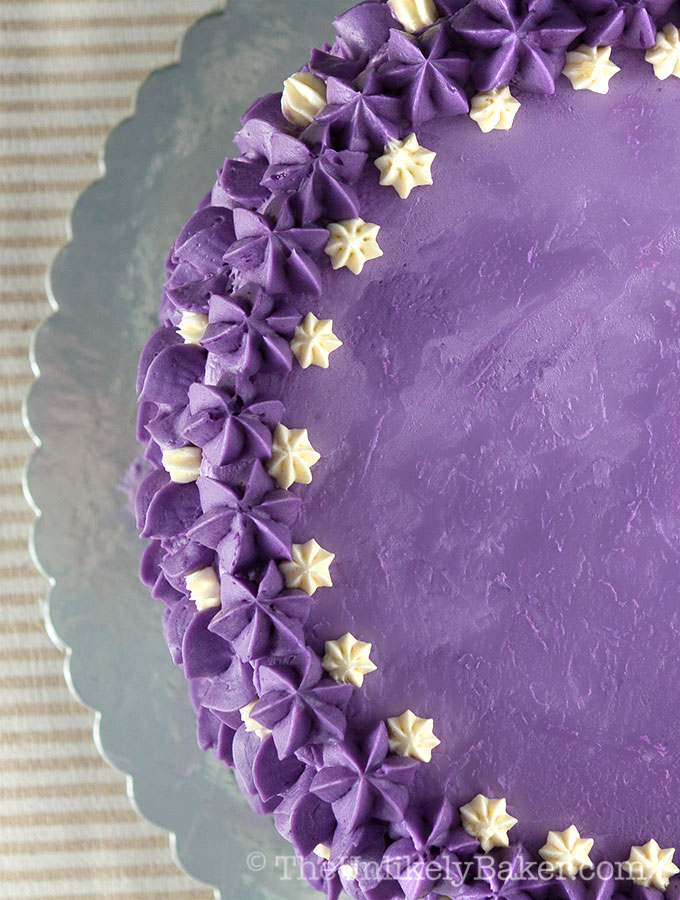
When I first started making Swiss meringue buttercream, I would always get discouraged when the buttercream turns into an ugly, curdled mess.
Over the years though, I realized it’s really part of the process.
So when you see a near-disaster in your bowl, don’t give up and most especially, don’t throw it away. Just continue whipping and you will end up with lovely frosting before you know it.
Why is my Swiss meringue buttercream runny
Runny SMBC is almost always related to heat. Maybe the sugar mixture didn’t cool down enough before the butter was added. Maybe the butter got too soft and warm.
If you notice your buttercream is not coming together, a simple solution would be to put your bowl with the buttercream and the whisk in the fridge for half an hour or so, or until you see the edges just beginning to harden and set.
Then just continue whipping.
Why does my buttercream look greasy
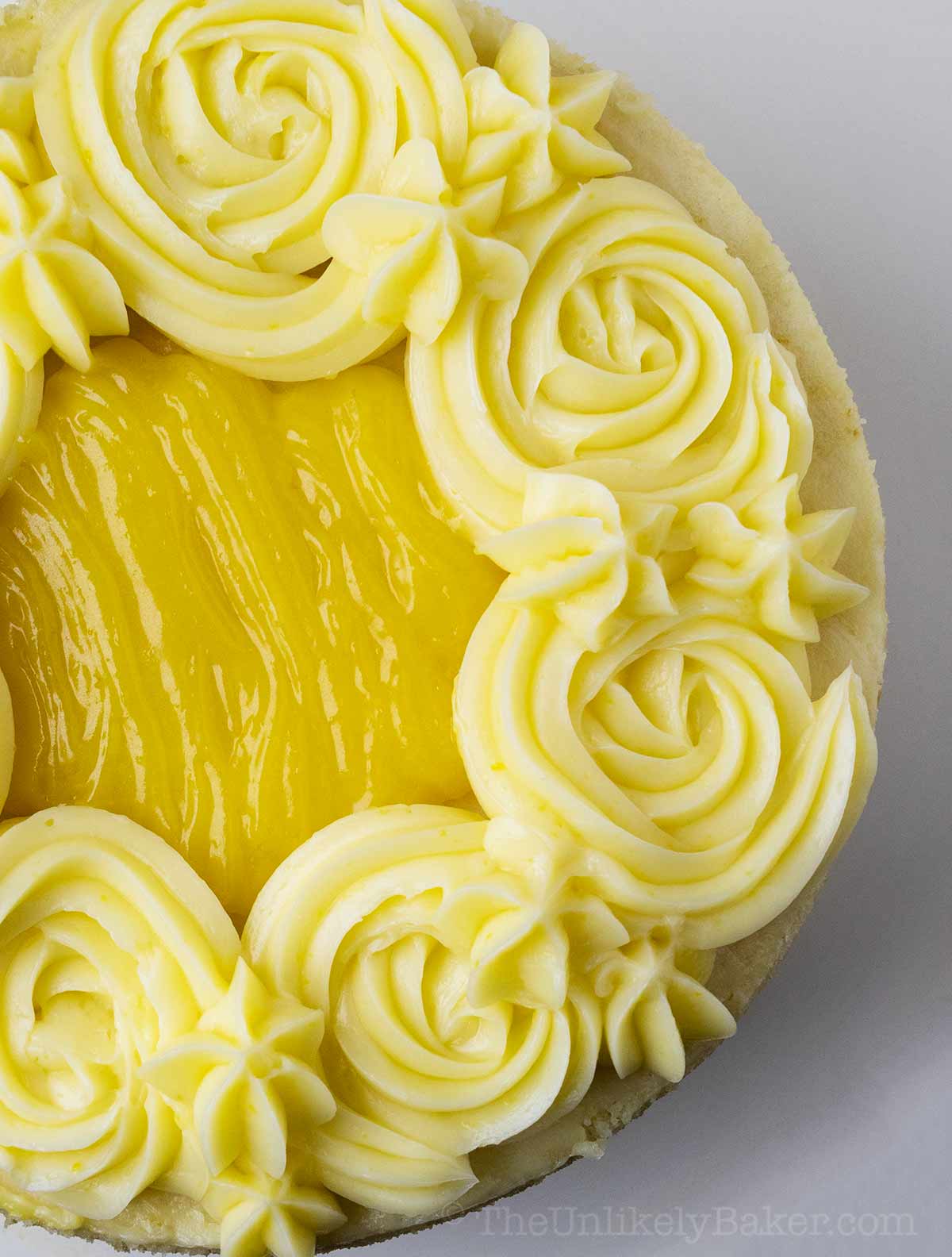
Swiss meringue buttercream can look greasy and oily if you add the butter when the sugar mixture hasn’t cooled down enough, or you add butter that’s way too soft.
What you can do is put everything — buttercream, bowl, whisks — in the fridge until it firms up, then whip again.
As you can see, SMBC is really easy to rescue! Usually, it’s just cool then whip again.
Can I make Swiss buttercream ahead of time
You can make Swiss buttercream up to 5 days before you plan on using it. Just keep it in an airtight container in the fridge.
You’ll need to bring it back to room temperature then re-whip it prior to using so it gets back that lovely smooth and glossy texture.
SMBC also freezer very well.
If I have extra egg whites, I usually make a batch of Swiss meringue buttercream, place it in a freezer safe container and keep it in the freezer.
This way I have a ready batch of buttercream any time.
Just bring down into the fridge the night before, allow to come back to room temperature then re-whip. Good as new.
It should last up to 3 months in the freezer.
How to flavour SMBC
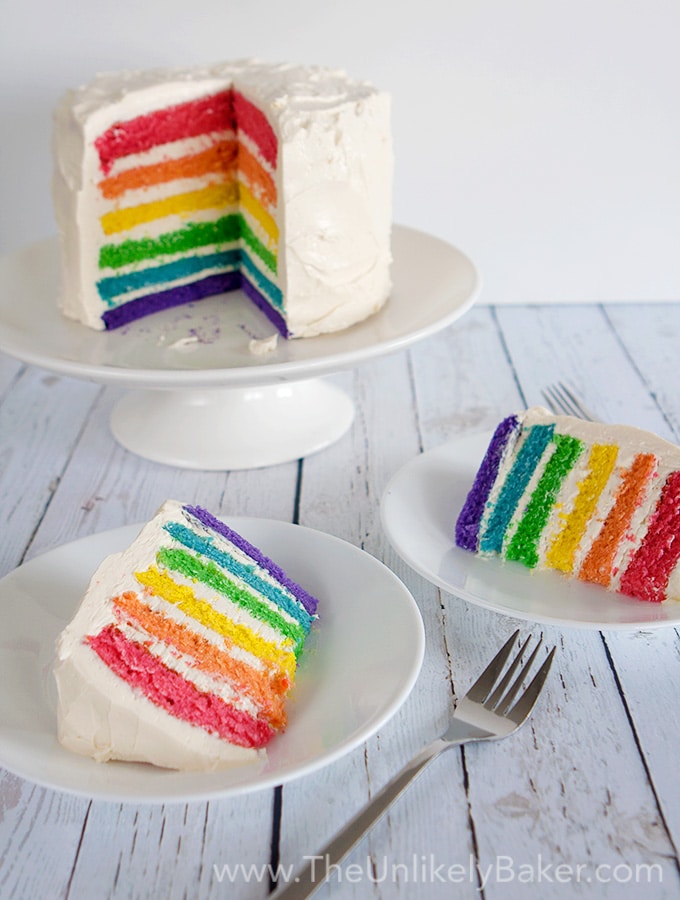
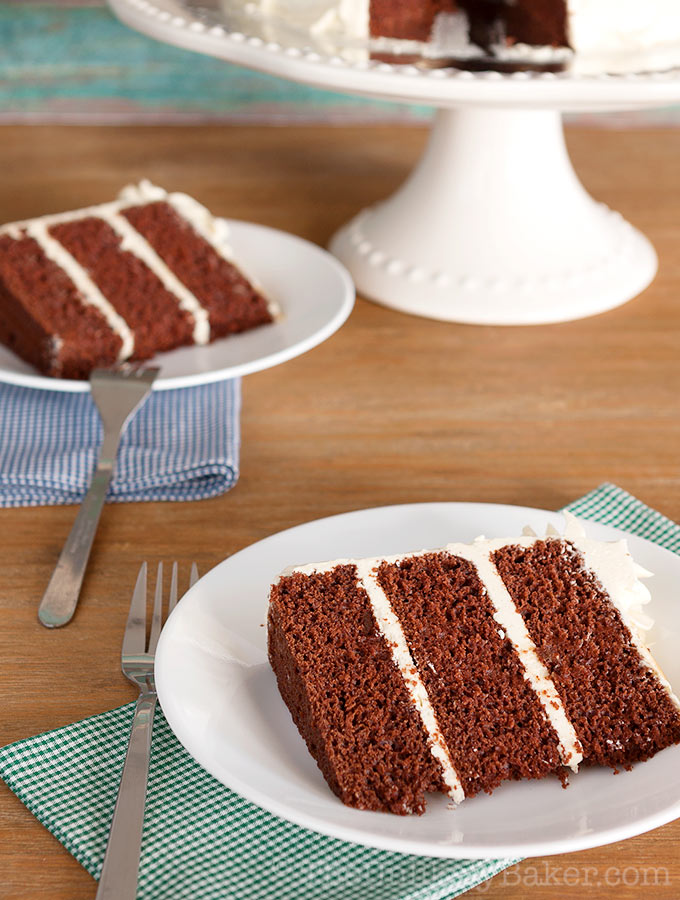
I have no exact recipe for flavoured Swiss meringue buttercream.
I just add whatever ingredient it is (from chocolate to lemon, from cookie butter to raspberry jam) a little at a time until I get the flavour I want. Just make sure what you’re adding is room temperature.
Try Swiss meringue buttercream in these recipes:
- Ube cake – ube buttercream
- Lemon curd cake – lemon buttercream
- Rainbow cake – vanilla buttercream
- London fog cake – Earl grey buttercream
- Classic easy vanilla cupcakes – vanilla buttercream tinted different colours
How to tint Swiss meringue buttercream
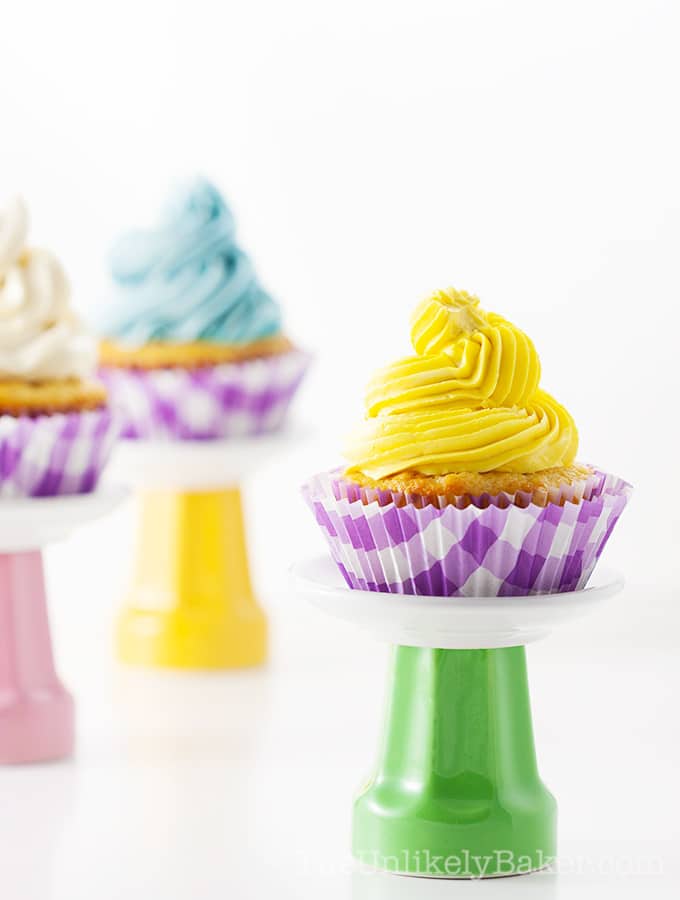
I’ve always found SMBC a little challenging to tint and get the exact colour I want.
So I always experiment with a small amount first. And I use gel food colour more often than liquid food colour because it’s more concentrated.
Swiss meringue buttercream is my go-to frosting. I love the way it looks, feels, tastes. And it makes my cakes and cupcakes look so nice!
Try it! You’ll discover why lots of bakers (pros and amateurs alike) love it.

How to Make Swiss Meringue Buttercream
Ingredients
- 5 pcs egg whites from large eggs
- 1 cup granulated sugar + 2 tablespoons
- pinch salt
- 2 cups unsalted butter soft but still a little cool to the touch, cut into parts
- 1 ½ tsp vanilla extract
Instructions
- Put your 5 egg whites, 1 cup + 2 tablespoons sugar and a pinch of salt in the bowl of your stand mixer (should be heatproof) and set that over a pan of simmering water. If you own a candy thermometer, clip that onto your bowl too.
- Constantly whisk your mixture by hand until the temperature reaches 140F (see notes). While whisking, swipe the sides of your bowl with your whisk once in a while to make sure no sugar crystals form.
- Take the bowl out of the heat and directly into your stand mixer fitted with the whisk attachment. Whisk on medium-high speed until you reach stiff peaks, the mixture is smooth and fluffy, and the bottom of your bowl is cool to the touch.
- With the mixer on medium-low speed, start to gradually add the 2 cups butter, small parts at a time, mixing well after each addition. Remember to scrape the bottom and sides of your bowl.
- Once you've added all the butter, add the 1½ teaspoons of vanilla and stir.
- Switch to the paddle attachment and continue beating on medium-low speed until your buttercream becomes smooth, glossy and creamy.
Video
Notes
- No thermometer? No problem. If the mixture feels warm and if you don’t feel any grains of sugar anymore when you rub a small amount between your fingers – you’re good.
- At some point your buttercream will look curdled and really quite awful. Don’t worry. Just keep whipping.
- I have no exact recipe for flavoured Swiss meringue buttercream. I just add whatever ingredient it is (e.g. melted chocolate or peanut butter) a little at a time until I get the flavour I want. Just make sure what you’re adding is room temperature.
- This yields about 4 cups of frosting. I’ve found that’s just enough to frost and fill a 2-layer, 9-inch cake (but I’m a heavy froster so that’s something to keep in mind).
- See post for more tips and FAQs.
Nutrition
Nutritional information are estimates only.
Did you make Swiss meringue buttercream? Tell me about it in the comments section below. I’d love to hear all about it.

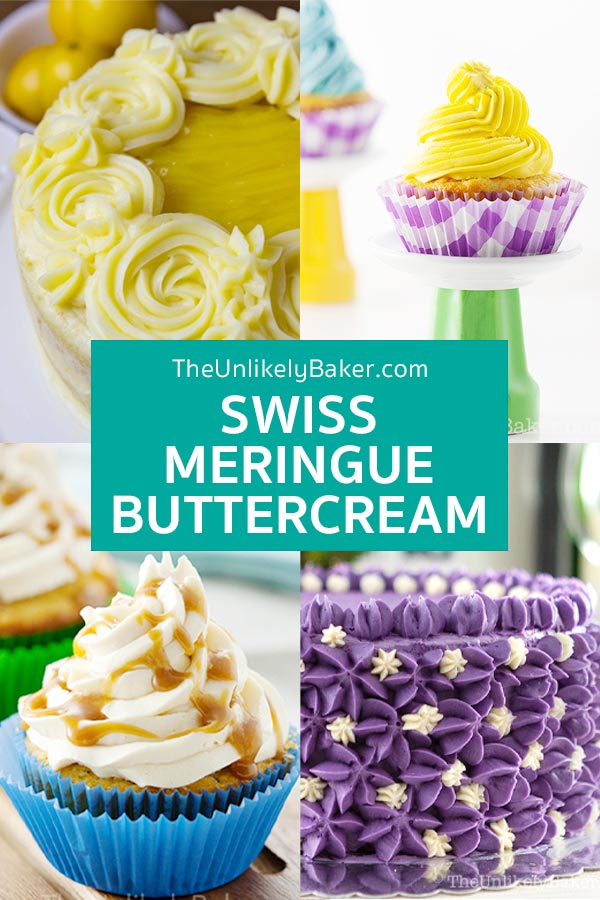
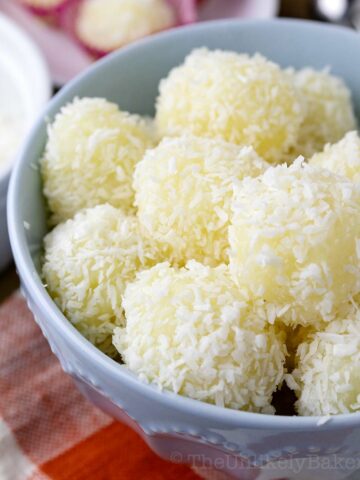
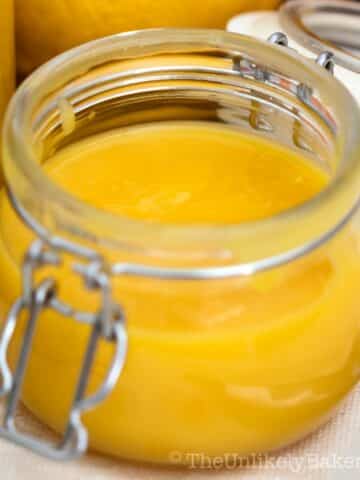
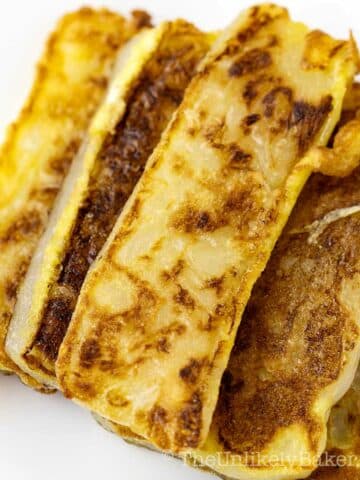
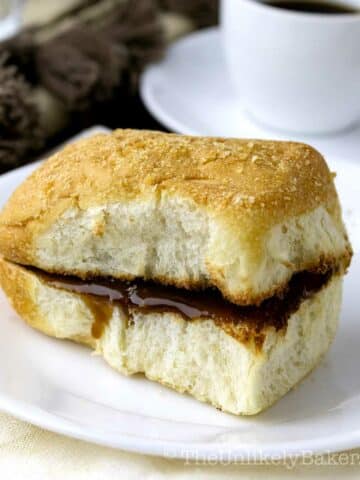
Yasira Vawda
If I want to add lemon curd to this recipe, at which point should I add it and how much do you usually add?
Thanks!
Jolina
You can add it at the end and beat until smooth and incorporated. For my lemon cake, I add about 1/2 cup of lemon curd.